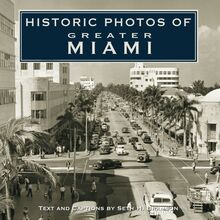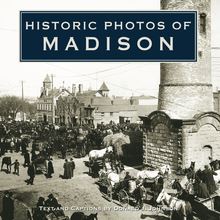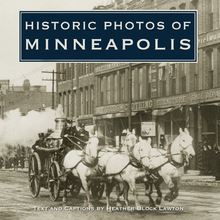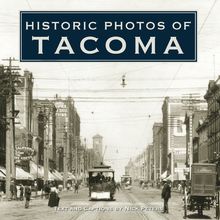Historic Photos of Denver , livre ebook
191
pages
English
Ebooks
2007
Vous pourrez modifier la taille du texte de cet ouvrage
Obtenez un accès à la bibliothèque pour le consulter en ligne En savoir plus
Découvre YouScribe en t'inscrivant gratuitement
Découvre YouScribe en t'inscrivant gratuitement
191
pages
English
Ebooks
2007
Vous pourrez modifier la taille du texte de cet ouvrage
Obtenez un accès à la bibliothèque pour le consulter en ligne En savoir plus
Publié par
Date de parution
23 février 2007
Nombre de lectures
2
EAN13
9781618586223
Langue
English
Poids de l'ouvrage
12 Mo
Publié par
Date de parution
23 février 2007
Nombre de lectures
2
EAN13
9781618586223
Langue
English
Poids de l'ouvrage
12 Mo
HISTORIC PHOTOS OF
DENVER
T EXT AND C APTIONS BY M YRON V ALLIER
This view of downtown Denver taken in 1909, shows the Arapahoe County Court House on the left and the Majestic Building near the start of 16th Street. The Front Range is in the distance.
HISTORIC PHOTOS OF
DENVER
Turner Publishing Company
200 4th Avenue North Suite 950
Nashville, Tennessee 37219
(615) 255-2665
www.turnerpublishing.com
Historic Photos of Denver
Copyright 2007 Turner Publishing Company
All rights reserved.
This book or any part thereof may not be reproduced or transmitted in any form or by any means, electronic or mechanical, including photocopying, recording, or by any information storage and retrieval system, without permission in writing from the publisher.
Library of Congress Control Number: 2006937077
ISBN-13: 978-1-59652-319-7
ISBN: 1-59652-319-0
Printed in the United States of America
08 09 10 11 12 13 14 15-0 9 8 7 6 5 4 3
C ONTENTS
A CKNOWLEDGMENTS
P REFACE
F ROM G OLD C AMP TO Q UEEN C ITY OF THE P LAINS (1858-1899)
T HE B IRTH OF THE C ITY B EAUTIFUL (1900-1919)
P ROGRESS , D EPRESSION, AND N EW D EAL (1920-1939)
P OST W ORLD W AR II AND THE G ROWTH OF D ENVER (1940-1972)
N OTES ON THE P HOTOGRAPHS
The Brown Palace Hotel, located at the intersection of Broadway and Tremont Place, was designed by Frank E. Edbrooke, for Henry C. Brown, and opened in 1892. It is still one of the great hotels of the world.
A CKNOWLEDGMENTS
This volume, Historic Photos of Denver , is the result of the cooperation and efforts of many individuals and organizations. It takes a community to preserve local history, especially visual history. The photographs featured in this book come from the Denver Public Library Western History/Genealogy Department s Western History Photograph Collection. This archive contains more than 600,000 photographs and negatives that document the history of Colorado and the trans-Mississippi West.
The library s photo database contains more than 110,000 images and catalog records of North American Indians, pioneer life, railroads, mining, Denver, Colorado towns, city, farm, and ranch life, recreation, landscape, as well as numerous other subjects.
Most of the digitized material on the website is from the Denver Public Library s Western History Photograph Collection; however, there is also a significant amount of material from the Colorado Historical Society photograph collection. The library sells high-resolution photographic prints, transparencies, and digital files of any of Denver Public Library s images on the website. To view or find more information about the collection or to order images, visit the library s website at
www.photoswest.org
This volume would not have been possible without the professional and amateur historians devoted to preserving the past, including the dedicated staff-past and present-of the Denver Public Library.
Coi Drummond-Gehrig
Linda Running Bently
Bruce Hanson
The publisher would also like to thank Myron Vallier, the author, for his valuable contributions and assistance in making this work possible.
P REFACE
Denver has thousands of historic photographs that reside in archives, both locally and nationally. This book began with the observation that, while those photographs are of great interest to many, they are not easily accessible. During a time when Denver is looking ahead and evaluating its future course, many people are asking, How do we treat the past? These decisions affect every aspect of the city-architecture, public spaces, commerce, infrastructure-and these, in turn, affect the way that people live their lives. This book seeks to provide easy access to a valuable, objective look into the history of Denver.
The power of photographs is that they are less subjective than words in their treatment of history. Although the photographer can make decisions regarding subject matter and how to capture and present it, photographs do not provide the breadth of interpretation that text does. For this reason, they offer an original, untainted perspective that allows the viewer to interpret and observe.
This project represents countless hours of review and research. The researchers and writer have reviewed thousands of photographs in numerous archives. We greatly appreciate the generous assistance of those listed in the acknowledgments of this work, without whom this project could not have been completed.
The goal in publishing this work is to provide broader access to this set of extraordinary photographs which seek to inspire, provide perspective, and evoke insight that might assist people who are responsible for determining Denver s future. In addition, the book seeks to preserve the past with adequate respect and reverence.
With the exception of touching up imperfections caused by the damage of time and cropping where necessary, no other changes have been made. The focus and clarity of many images is limited to the technology and the ability of the photographer at the time they were taken.
The work is divided into eras. Beginning with some of the earliest known photographs of Denver, the first section records photographs from before the Civil War through the late nineteenth century. The second section spans the early years of the twentieth century through the World War I era. Section Three moves to the twenties and thirties. The last section covers the post World War II era up to recent times.
In each of these sections we have made an effort to capture various aspects of life through our selection of photographs. People, commerce, transportation, infrastructure, religious institutions, and educational institutions have been included to provide a broad perspective.
We encourage readers to reflect as they go walking in Denver, strolling through the city, its parks, and its neighborhoods. It is the publisher s hope that in utilizing this work, longtime residents will learn something new and that new residents will gain a perspective on where Denver has been, so that each can contribute to its future.
Todd Bottorff, Publisher
Denver newspaper police reporters pose in front of the old Denver City Hall. The men are identified as George Flanagan and Mudge Ransom, in the front row, and George Minot, Walter Lovelace, an unidentified reporter, Johnny Day, and Joe Satterthwaite, in the back row.
F ROM G OLD C AMP TO Q UEEN C ITY OF THE P LAINS
1858-1899
For centuries the mountains and plains of Colorado were hunting grounds for North American Indians. The Arapaho regularly camped at the confluence of the South Platte River and Cherry Creek on the site of what is now Denver. Auraria, the first European settlement in the area, came about as a result of an 1858 gold strike on Cherry Creek, made by William Green Russell. Soon after, William Larimer established another settlement across Cherry Creek, Denver City, named after the first territorial governor of Kansas, James Denver. By 1860 the two towns would merge as Denver.
In 1863 Denver s business district was destroyed by fire and in 1864 a flood on Cherry Creek devastated parts of Auraria. But the city quickly recovered, and by 1865 it had become the capital of the Colorado territory. Growth, however, eluded the city and the 1870 census counted fewer than 5,000 residents. The first railroad arrived in Denver in 1870; soon others followed and brought much-needed diversity to the Denver economy.
In 1881 Denver was named capital of the state of Colorado, and by the 1880s and 1890s silver mining in the nearby mountains brought rapid growth and prosperity to the city. In 1885, the Denver Electric and Cable Company began the city s first cable railroad service, and in that same year, the Denver Tramway Company started the city s first electric streetcar service using an underground conduit.
Education was very important to early Denver residents. Two private schools, St. Mary s Academy (Catholic) and Wolfe Hall (Episcopalian) were opened in the 1860s, and the first Denver public school, Arapahoe School, was opened in 1873. Three private colleges were opened between 1864 and 1887, the University of Denver, Regis College, and Loretto Heights College.
By 1890 the city had grown to 108,000, making it the second largest city in the West. However the silver panic of 1893 put an end to Denver s first boom. By the end of the century, Denver had become a center for transportation, agriculture, and industry, but economic prosperity once again eluded the Queen City of the Plains.
The Rocky Mountain News office, built in 1860, was destroyed by the Cherry Creek flood in 1864. The newspaper, founded by William Newton Byers, is still in existence.
The early city of Denver suffered great damage, and the city of Auraria was wiped out, when Cherry Creek flooded in 1864. Despite warnings of the potential hazard, the settlers had built near the river. Here we see well-dressed residents surveying the damage from both sides of the creek.
City policemen dressed in uniform and young boys pose in front of the City Jail located in the former Butterick Meat Market building at 1355 13th Street. One of Denver s earliest jails, it was located here from 1866 through 1883.
Frontier justice could be swift. Sanford Dougan, accused of murder, was hanged by a mob in Denver on December 2, 1868.
The Denver City Home Guard was organized in 1861 to fight in the Civil War and attached to the District of Colorado. The guard marched to New Mexico and engaged Confederate troops on February 21, 1862, at Valverde, south of Socorro. The guard was mustered out on April 1, 1862.
Originally the U.S. Branch Mint, located near the corner of 16th and Holladay (later Market) streets, was the Clark, Gruber Co. bank and mint. The business was sold to the government in 1863. The original building was then incorporated into the building pictured here.
Covered wagons crowd 15th Street in this photo taken in 1865. The photogra














